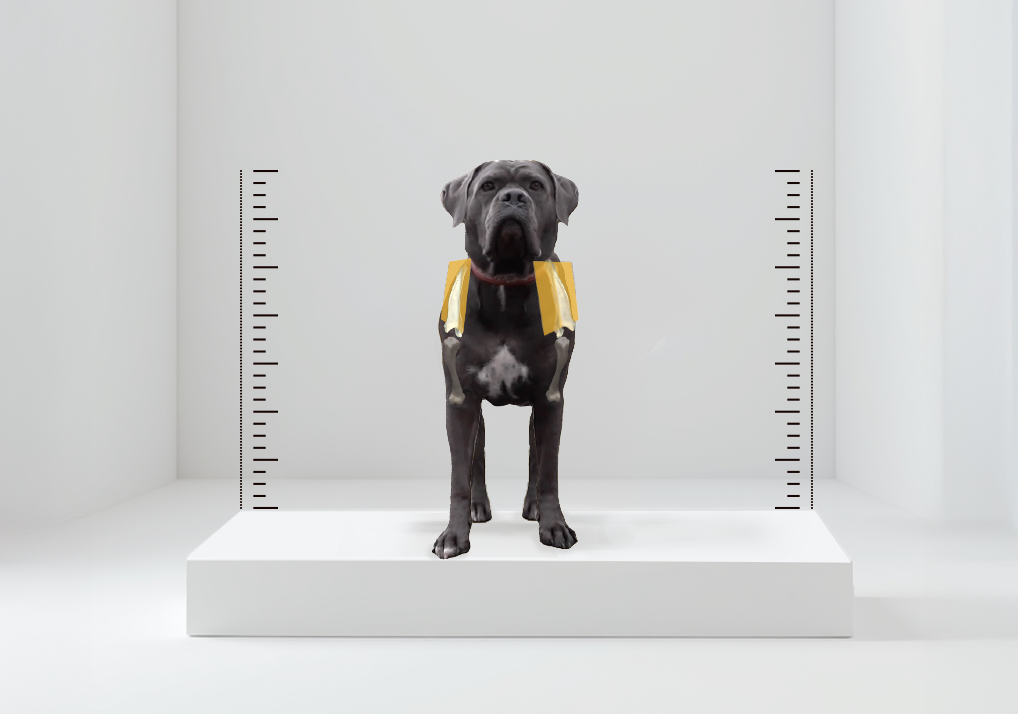Kinematic gait analysis in dogs – more than just lameness detection
Kinematic gait analysis in dogs makes movements visible. Unlike traditional observation, it provides objective, measurable data on joint angles, range of motion and symmetry in the gait pattern. It offers veterinarians a valuable decision-making aid, especially in the case of subtle orthopaedic problems that often escape the eye. We explain what’s behind the method – and why systems like LupoGait are making gait analysis suitable for everyday use for the first time.

From observation to measurement
“He’s limping a bit on the left – or the right?” Visual gait assessment is routine in everyday veterinary practice, but it is also prone to error. The eye reaches its limits, especially in the case of mild, symmetrical movement disorders or early orthopaedic changes.
This is where kinematic gait analysis comes in: It makes movement measurable, objective and reproducible. In conjunction with modern sensors such as IMUs (Inertial Measurement Units), it provides precise data on a dog’s gait pattern – and therefore a solid basis for diagnostics, follow-up and therapy planning.
What is kinematic gait analysis in dogs?
Kinematic gait analysis in dogs describes the movement of a body without taking the underlying forces into account. The focus is on parameters such as:
- Joint angle (e.g. flexion/extension in the gait cycle)
- Range of motion of individual joints
- Step length and frequency
- Acceleration and speed of body segments
- Symmetry of movement sequences
These values are recorded by sensors on the dog’s body and evaluated using software. The advantage: they are objective and comparable – ideal for before-and-after analyses, progress monitoring or early diagnosis.
What kinematic data reveals about health
Many orthopaedic diseases develop gradually. Dogs often compensate for pain or instability so skillfully that clinical symptoms only appear late. Kinematic data helps to make such compensations visible at an early stage:
- A reduced amplitude of movement in the elbow joint can indicate the onset of MCD (medial coronoid disease)
- Asymmetries in the movement pattern often indicate compensatory lameness
- Altered pelvic rotation can indicate unrecognized hip instability
- Such indications can be measured early on, before they become clinically apparent. This makes kinematic gait analysis particularly valuable for early detection and follow-up.
IMUs as a key technology – objective, flexible, practical
In the past, kinematic analysis was reserved for complex laboratories with camera systems and markers. Today, inertial sensors (IMUs) make it possible to collect gait data flexibly and in a way that is suitable for everyday use:
- Portable and quick to install (e.g. with Velcro or vests)
- Data recording in the natural gait pattern (no treadmill required)
- Software-supported evaluation – also cloud-based possible
IMUs measure acceleration, angular velocity and orientation in space – from this, joint angles and movement profiles can be calculated. The technology is not only precise, but also cost-effective and suitable for clinical use.
LupoGait – scientifically developed, clinically applicable
LupoGait is based on validated IMU technology and has been specially developed for use in veterinary practices. The system combines clinical practicability with scientific depth:
- 6 sensors are attached to the dog (e.g. on the legs and pelvis)
- The measurement takes approx. 10 to 15 minutes
- Data analysis is automatic and provides reproducible results
The special feature: LupoGait is not just a measuring system, but also offers intelligent evaluation of the gait data – for example on symmetry, joint angle dynamics or range of motion – and is therefore ideally suited for early detection, therapy monitoring and progression measurement.
Conclusion: The future of orthopaedics is measurable
Veterinary orthopaedics is developing rapidly. Where experience and observation alone had to decide in the past, objective data is now available. Kinematic gait analysis makes movement patterns quantifiable and thus offers a new basis for well-founded decisions – in early diagnostics as well as in rehabilitation.
With systems such as LupoGait, this technology is now widely applicable in practice for the first time – and offers veterinarians the opportunity to detect orthopaedic problems early, reliably and comprehensibly.
Learn more:
Learn more about the technology behind LupoGait